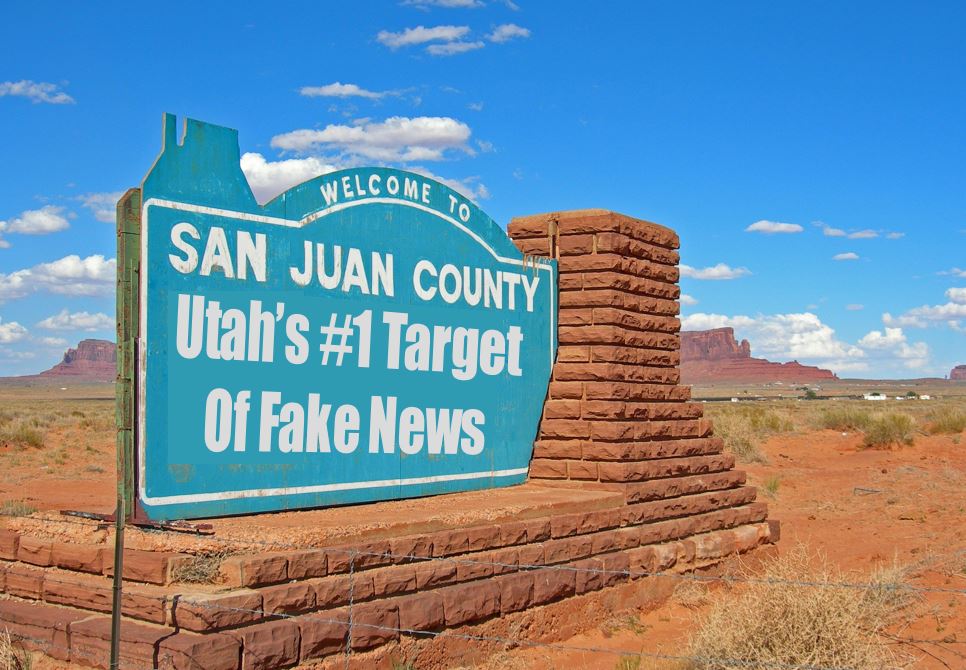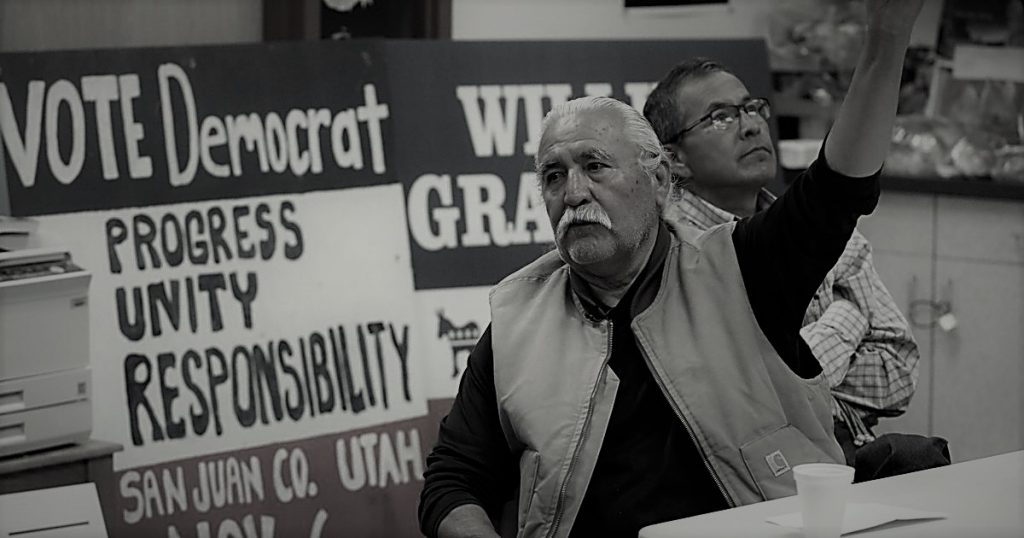These doomsday predictions, based entirely on computer simulations similar to those used in climate studies, were believable enough that national leaders accepted them at face value. Worse, they also accepted Ferguson’s policy recommendations, which were then implemented with precise detail.
Patrick Wood
The Common Roots Of Climate Change And COVID-19 Hysteria
Introduction
People want to know: just how bad is the COVID-19 virus and is fighting it worth the destruction of the world’s economic and financial system while disrupting the lives of hundreds of millions of people? The story behind the story will make it clear that things are seldom as they seem.
In short and when seen through the lens of Sustainable Development, aka Technocracy, the whole world has just been punked and then panicked into destroying itself over COVID-19.
The culprit? A world-class Technocrat in Britain: Dr. Neil Ferguson, PhD is a professor at Imperial College in London that bills itself as a “global university”. It is thoroughly steeped in Sustainable Development and more dedicated to social causes than academic achievement. In fact, Imperial is very well-known for its alarmist research reports on climate change, carbon reduction, environmental degradation, loss of biodiversity, etc.
The problem with the global warming meme is that it is a tired, worn-out racehorse that much of the world simply ignores. Global warming alarmists have tried every trick in the book to stampede the world into Sustainable Development. They have knowingly falsified climate data, flooded the world with inaccurate academic reports, held world meetings like the Paris Accord in France, threatened and bullied their critics, created a global youth movement to shame leaders into action, etc. All of these strategies have failed to usher in the UN’s Sustainable Development, aka Technocracy, and show little promise of success in the future.
What the Sustainable Development crowd needed was to put their non-performing racehorse “Global Warming” out to pasture and find a brand new horse that could finally run and win the race to what the UN calls “deep transformation” of the entire global economic system. The new horse is named “COVID-19”. Different horse, same jockey, same race, same finish line.
Imperial College
The President of Imperial College is Professor Alice Gast. She considers the college to be part of a “new paradigm of the global university” that promises to be “a contributor to a better future.” Gast also notes the three general areas of focus of Imperial are “epidemics, shortages of natural resources and environmental crises.” In other words, the environment, natural resources and epidemics are seen as intertwined and inseparable.
The “global university” is indeed a new paradigm, and one that radically transforms the traditional role of education into one of social activism. Success is measured by social impact on society and not according to scholastic achievement.
Furthermore, the global university is invariably framed as a champion of the United Nations’ Sustainable Development and Imperial is no exception. The head of Sustainability at Imperial is Professor Paul Lickiss. His web page states, “Sustainability should run through the whole of College thinking and activity at all levels and across all campuses.” A casual examination of the various departments at Imperial confirm this statement: sustainability, environmentalism and climate change themes are seen everywhere.
The Work Begins
Once the release of COVID-19 in Wuhan was recognized as a potential pandemic, academic researcher Dr. Neil Ferguson went to work developing a computer model to track and forecast its rapid spread. At the top of his field, Ferguson is a professor of mathematical biology at Imperial College in London, and has had extensive experience in tracking other infectious diseases such as the swine flu in 2009, Dengue in 2015 and Zika in 2016.
Ferguson is a British epidemiologist and a professor of mathematical biology at Imperial College. According to the World Health Organization (WHO),
Epidemiology is the study of the distribution and determinants of health-related states or events (including disease), and the application of this study to the control of diseases and other health problems. Various methods can be used to carry out epidemiological investigations: surveillance and descriptive studies can be used to study distribution; analytical studies are used to study determinants.
With a Master of Arts degree in physics, he received a Doctor of Philosophy degree in theoretical physics. He has no medical or related degree, but rather chose to apply his education to use his mathematical skills by modeling the spread of infectious diseases.
In other words, Ferguson is a data-driven Technocrat with direct access to policy-makers around the world. According to the New York Times,
Imperial College has advised the government on its response to previous epidemics, including SARS, avian flu and swine flu. With ties to the World Health Organization and a team of 50 scientists, led by a prominent epidemiologist, Neil Ferguson, Imperial is treated as a sort of gold standard, its mathematical models feeding directly into government policies.
Ferguson’s COVID-19 Study
Early on in the COVID-19 outbreak, Ferguson began to advise officials in Britain and the United States on the spread of the infection as well as ways to fight it. Thus, he served as both researcher and policy advisor at the same time.
Ferguson’s conclusion that COVID-19 would kill as many as 500,000 people in Britain and over 1.1 million in the United States, set off a tidal wave of panic that has not subsided. His policy recommendations were just as shocking, namely, that societies must be entirely locked down in order to survive.
On March 16, 2020, Ferguson finally released his formal report, Impact of non-pharmaceutical interventions (NPIs) to reduce COVID19 mortality and healthcare demand.
Here are some quick observations from reading this report:
•Well before publishing, he advised policy makers. His modeling study “informed policymaking in the UK and other countries in recent weeks”
•Comparable to 1918 Spanish flu: “it represents the most serious seen in a respiratory virus since the 1918 H1N1 influenza pandemic”
•Applied this and previous model to UK and US: “we apply a previously published microsimulation model to two countries: the UK (Great Britain specifically) and the US”
•There are two possible strategies: Mitigation and Suppression
•Mitigation: This proposed social distancing, home-isolation of sick, home-quarantine of relatives, “We find that that optimal mitigation policies (combining home isolation of suspect cases, home quarantine of those living in the same household as suspect cases, and social distancing of the elderly and others at most risk of severe disease) might reduce peak healthcare demand by 2/3 and deaths by half”
•In spite of reducing deaths by half, “the resulting mitigated epidemic would still likely result in hundreds of thousands of deaths and health systems (most notably intensive care units) being overwhelmed many times over”
•Thus, he argues that Suppression is the only option
•Suppression: Additional measures include social distancing of the entire population, home isolation of infected, household quarantine of family members, school and university closures
•Long term: Suppression “will need to be maintained until a vaccine becomes available (potentially 18 months or more)”.
These doomsday predictions, based entirely on computer simulations similar to those used in climate studies, were believable enough that national leaders accepted them at face value. Worse, they also accepted Ferguson’s policy recommendations, which were then implemented with precise detail. Here are some of the more prescient excerpts from the report’s conclusion section:
Our results demonstrate that it will be necessary to layer multiple interventions, regardless of whether suppression or mitigation is the overarching policy goal. However, suppression will require the layering of more intensive and socially disruptive measures than mitigation. The choice of interventions ultimately depends on the relative feasibility of their implementation and their likely effectiveness in different social contexts. (p. 14)
Overall, our results suggest that population-wide social distancing applied to the population as a whole would have the largest impact; and in combination with other interventions – notably home isolation of cases and school and university closure – has the potential to suppress transmission below the threshold of R=1 required to rapidly reduce case incidence. A minimum policy for effective suppression is therefore population-wide social distancing combined with home isolation of cases and school and university closure. (p. 14)
To avoid a rebound in transmission, these policies will need to be maintained until large stocks of vaccine are available to immunise the population – which could be 18 months or more. (p.15)
Technology – such as mobile phone apps that track an individual’s interactions with other people in society – might allow such a policy to be more effective and scalable if the associated privacy concerns can be overcome. (p. 15)
Perhaps our most significant conclusion is that mitigation is unlikely to be feasible without emergency surge capacity limits of the UK and US healthcare systems being exceeded many times over. In the most effective mitigation strategy examined, which leads to a single, relatively short epidemic (case isolation, household quarantine and social distancing of the elderly), the surge limits for both general ward and ICU beds would be exceeded by at least 8-fold under the more optimistic scenario for critical care requirements that we examined. In addition, even if all patients were able to be treated, we predict there would still be in the order of 250,000 deaths in GB, and 1.1-1.2 million in the US. (p. 16)
The mind of a Technocrat can be clearly seen in this whole package. All of these draconian measures must be maintained until a vaccine is created, which is at least 18 months. The use of mobile phone apps to track the world’s population could be effective if citizens could be railroaded into it. What is not seen is one word about the destruction of the global economic system that would certainly result from these draconian policy measures.
Climate alarmists who articulated the Green New Deal policies also call for radical measures to transform society and they are likewise silent about the inevitable destructive effects such policies would have on the global economy.
Free Range Report
Thank you for reading our latest report, but before you go…
Our loyalty is to the truth and to YOU, our readers!
We respect your reading experience, and have refrained from putting up a paywall and obnoxious advertisements, which means that we get by on small donations from people like you. We’re not asking for much, but any amount that you can give goes a long way to securing a better future for the people who make America great.
[paypal_donation_button]
For as little as $1 you can support Free Range Report, and it takes only a moment.




Perhaps the most ignorant screed I’ve read on the subject.